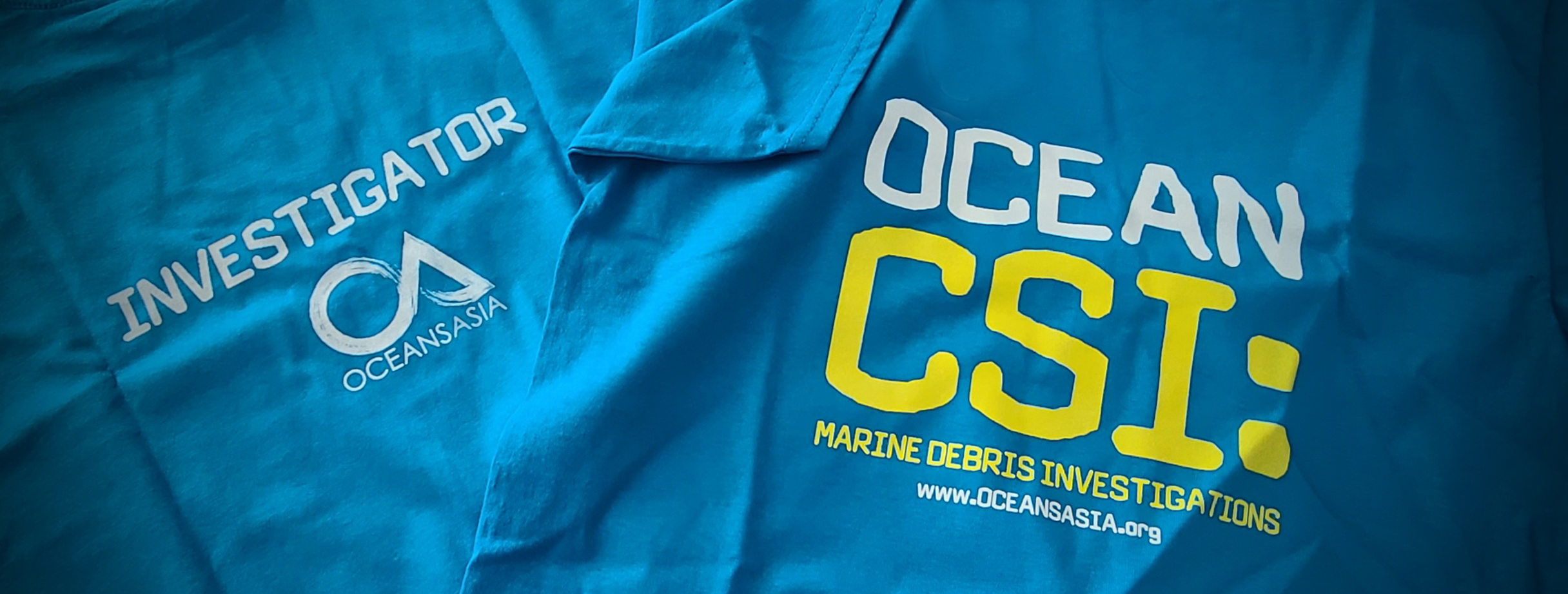
The Ocean CSI: Project
We fully support beach cleanup initiatives. Removing a single piece of plastic can literally mean life or death to an animal that may consume it or become entangled. The exposure to marine debris by cleanup volunteers is a great way to get people passionate about conservation and can help motivate us all to be more responsible in our use and approach to single use plastics.
However, it is critical that we stop the flow of plastic into our oceans. Otherwise, every new wave will deposit yet more plastic on our beaches. When your bathtub is overflowing, you turn off the tap and then grab a mop. Following our “turn the tap off” approach to tackling marine debris we established our Ocean CSI: project.
Ocean CSI: To investigate marine debris, ascertain the composition of trash and look for any clues as to its origins with the intention to follow up and close down at source to reduce the amount of plastic that enters our oceans.
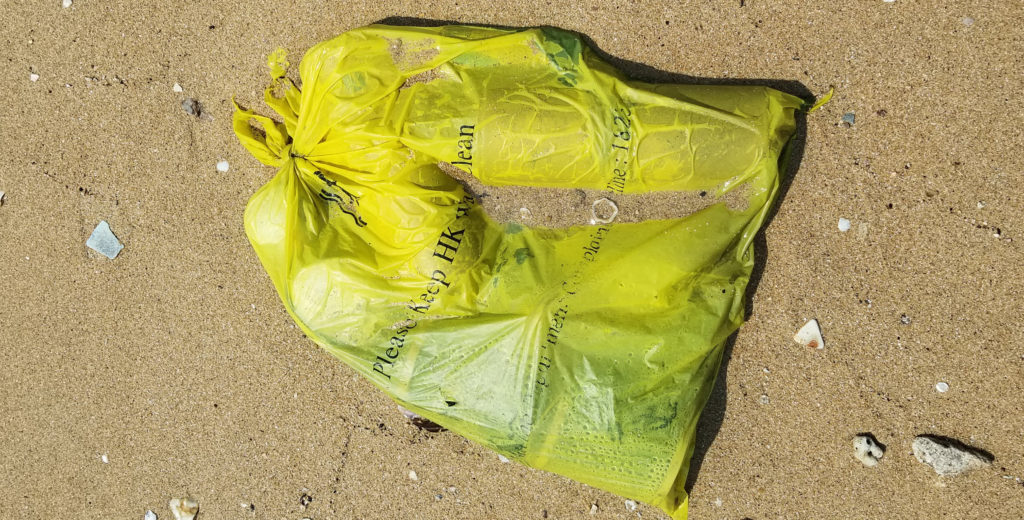
BECOME AN OCEAN CSI: INVESTIGATOR
The first steps to becoming an Ocean CSI: Investigator is to get out in the field and have your eyes open. Our investigators don’t just see a beach or coastline covered in trash, we look at what the marine debris comprises of. Always document everything you see, regardless of if it is the focus of your current investigation. Often we find something and then review old photos and find clues that we may have missed at the time or an issue that wasn’t relevant then.
Questions to ask yourself when looking at a beach covered in debris:
Q. What are the most common items you see?
A. Does the debris look to be household products, fishing industry, packaging, construction waste, etc.’
Q. Are there any identifying marks?
A. Labels and brands can be an indication as to the origin of debris. Are there any names, companies, addresses, telephone numbers, websites, emails or even QR codes?
Start mapping items that have any addresses on them. One example are medicine bags, the little bags in which doctors will pack prescriptions. These have the doctors surgery address. Perhaps a bag is only given out at one supermarket in town, or plastic items from a local promotion might wash up in droves.
In one case we found medicine bags from the same surgery on the same beach, over multiple visits, yet the surgery was on the other side of Hong Kong. How could they be getting here? In this case the surgery was next to a fishing harbour so one likely probability was that the medicine was prescribed to a fishermen who worked on the nearby fish farms. After finishing did he toss overboard in the same bay while at work?

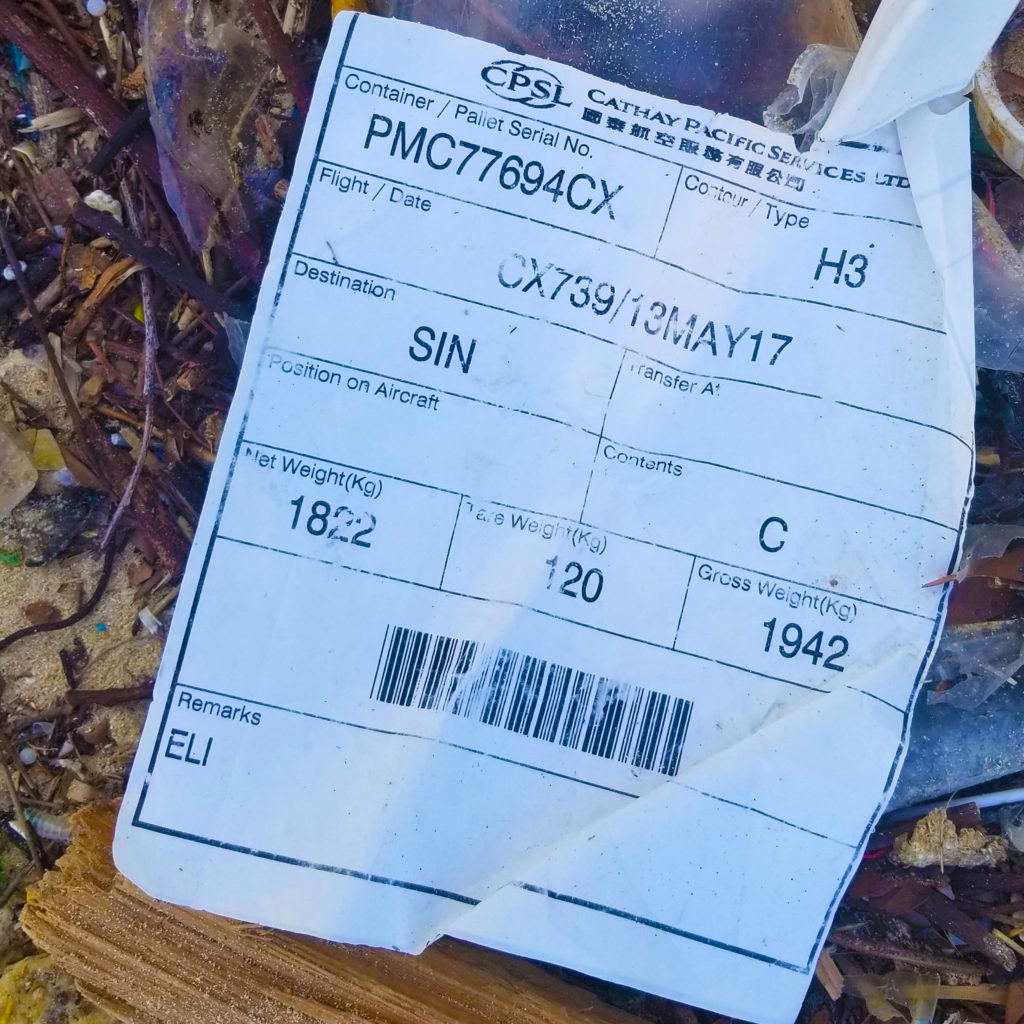
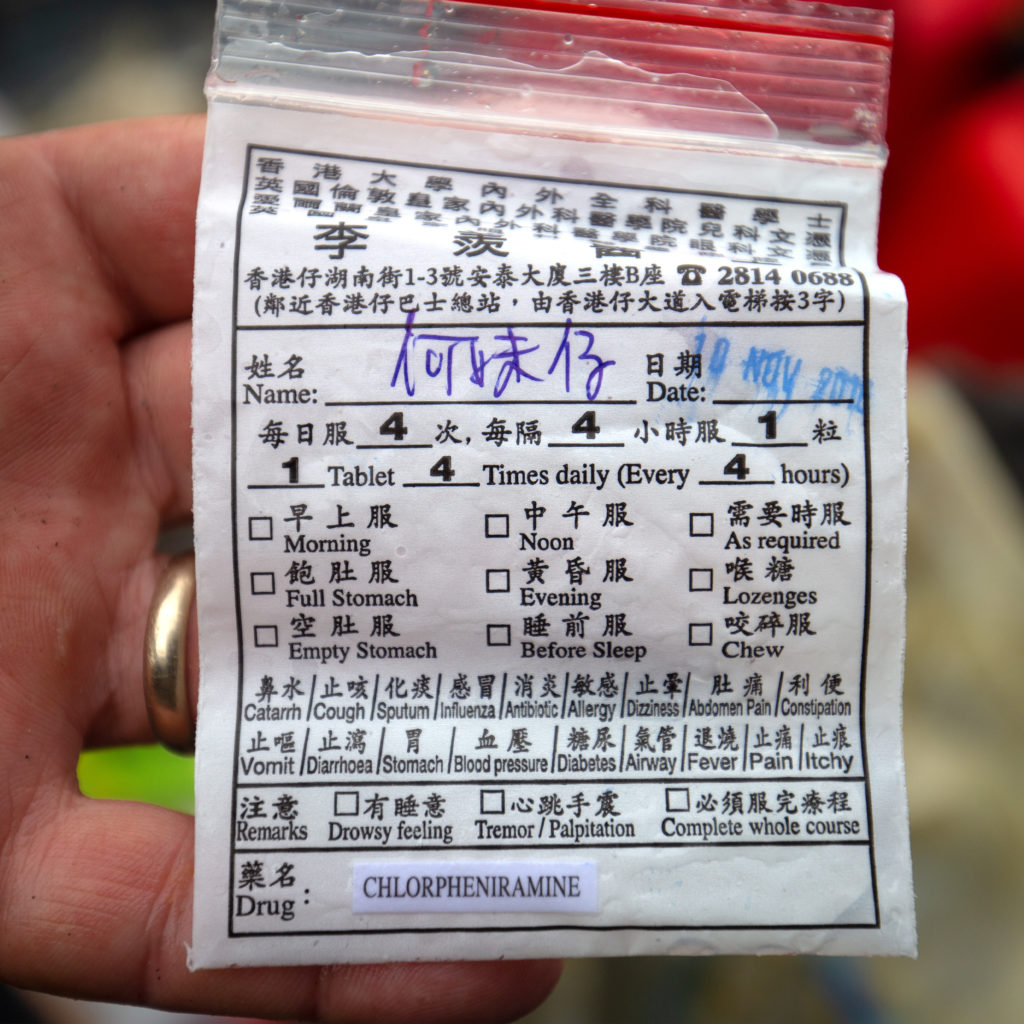
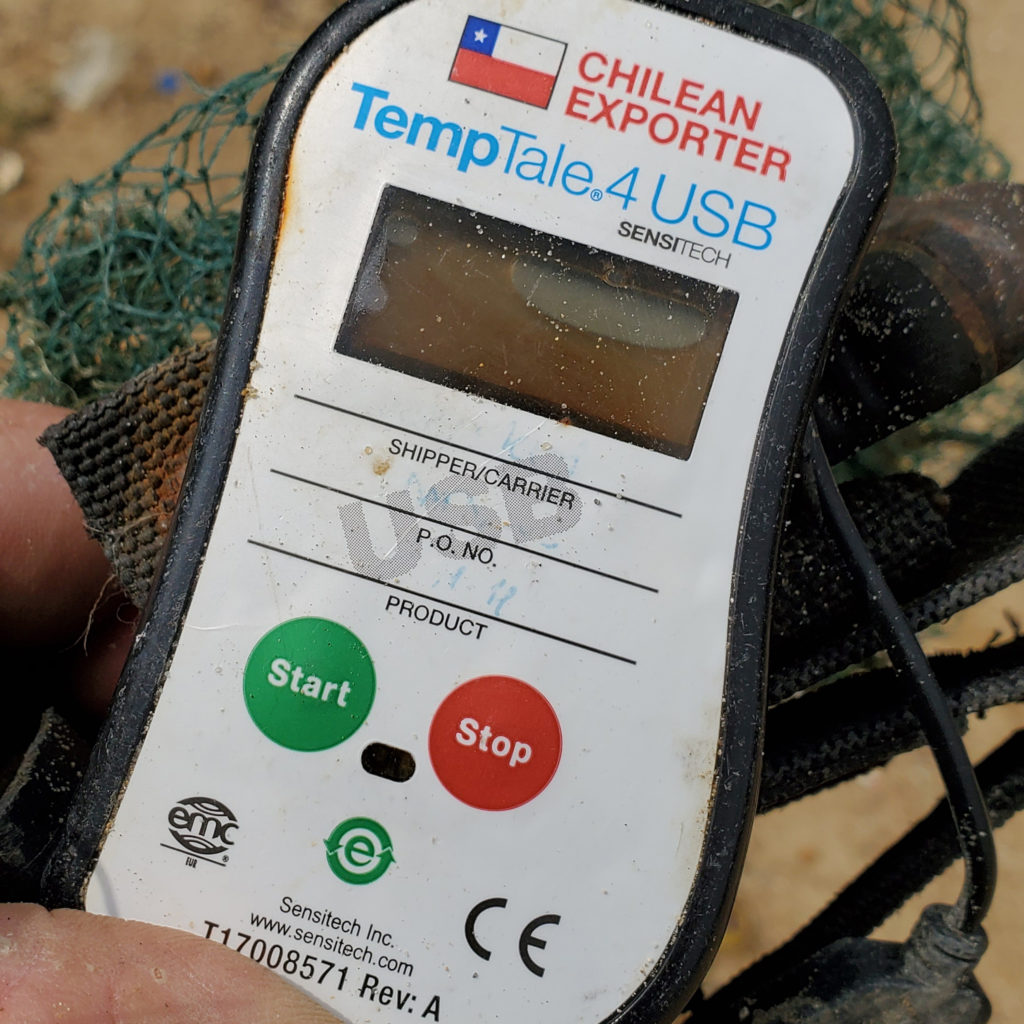
UNDERSTANDING LOCAL CONDITIONS
Nothing replaces local knowledge. The elements play a key factor in marine debris distribution. Knowing how local water currents flow can be key in closing down the options of a source. Also knowing the individual items and what plays a predominant factor in their water movements for example a polystyrene fish box is light and has little of its mass underwater so will have less of an effect from water currents as opposed to its high “windage” factor as it is high sided and would be greatly affected by the wind. Other items such as sacks would have little effect from the wind, but a great effect from the currents.
A good knowledge of local geography is also key. Are their fishing harbours or fish farms, construction project sites or local towns with restaurants nearby? You may find a lot of debris from the fishing industry nearby fishing harbours for example.
On one beach we constantly found fish feed sacks yet there was no fish farms in the immediate area. Knowing that the currents were flowing from the east to this beach we traced back and 7 miles east of that location we found fish farms. A cardboard pizza box was likely left by beach goers rather than arriving by sea, a look in the area found the pizza restaurant. Another were many red sachets from hand wipes at a popular seafood restaurant. Were guests discarding or was the restaurant dumping their trash into the sea?
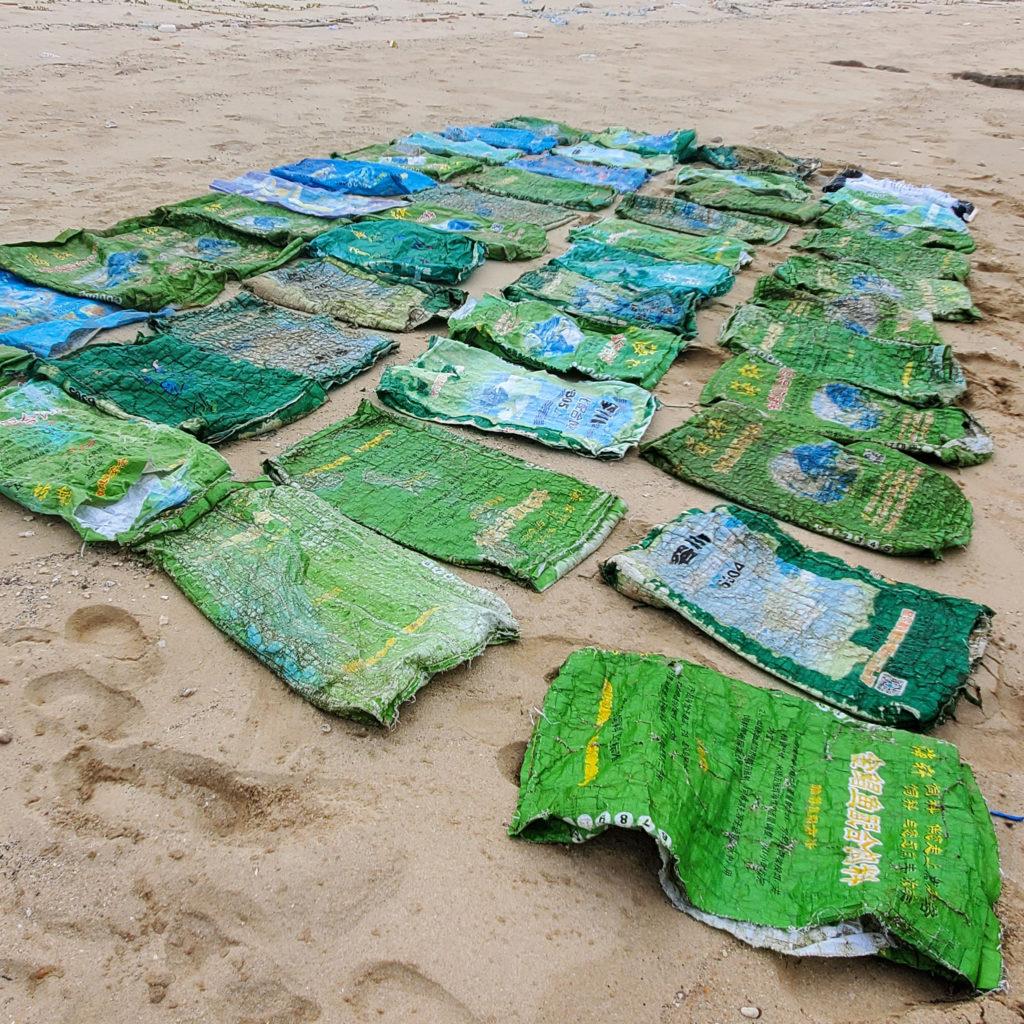
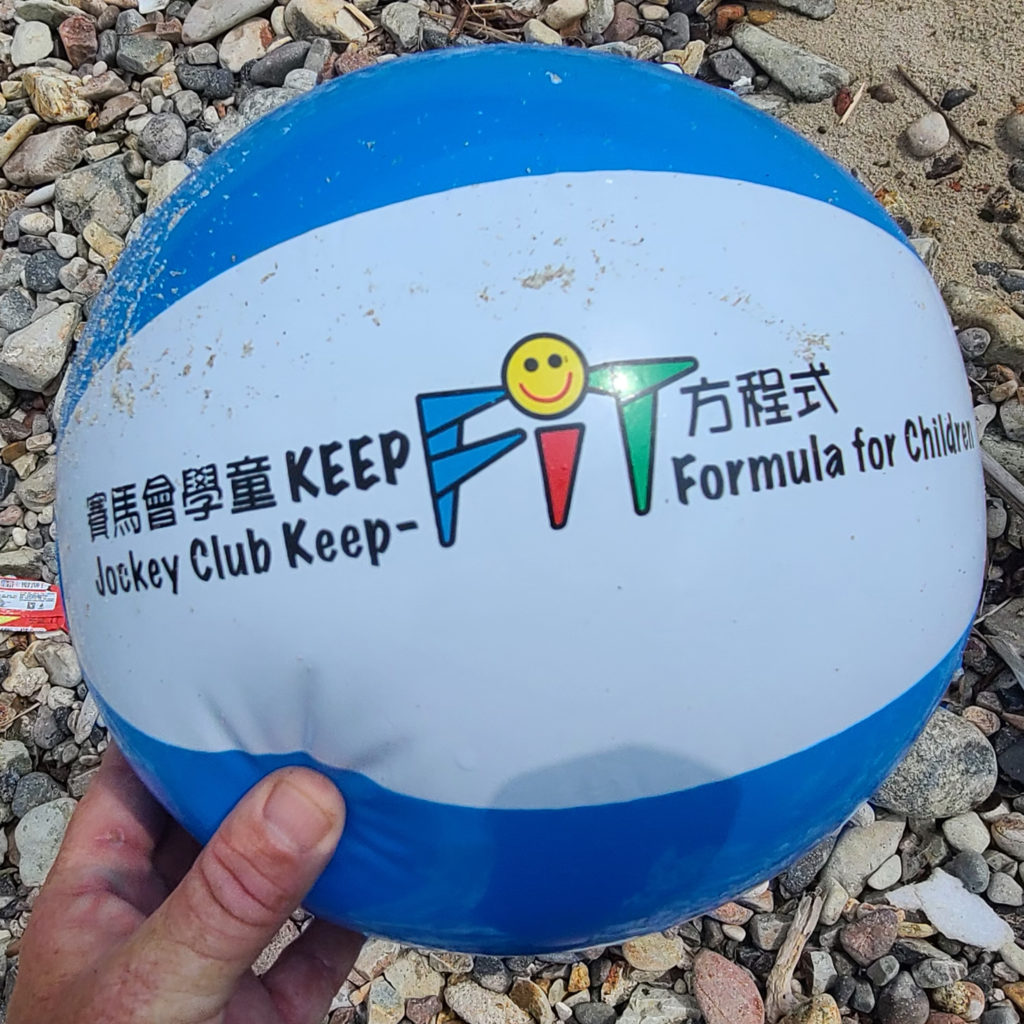
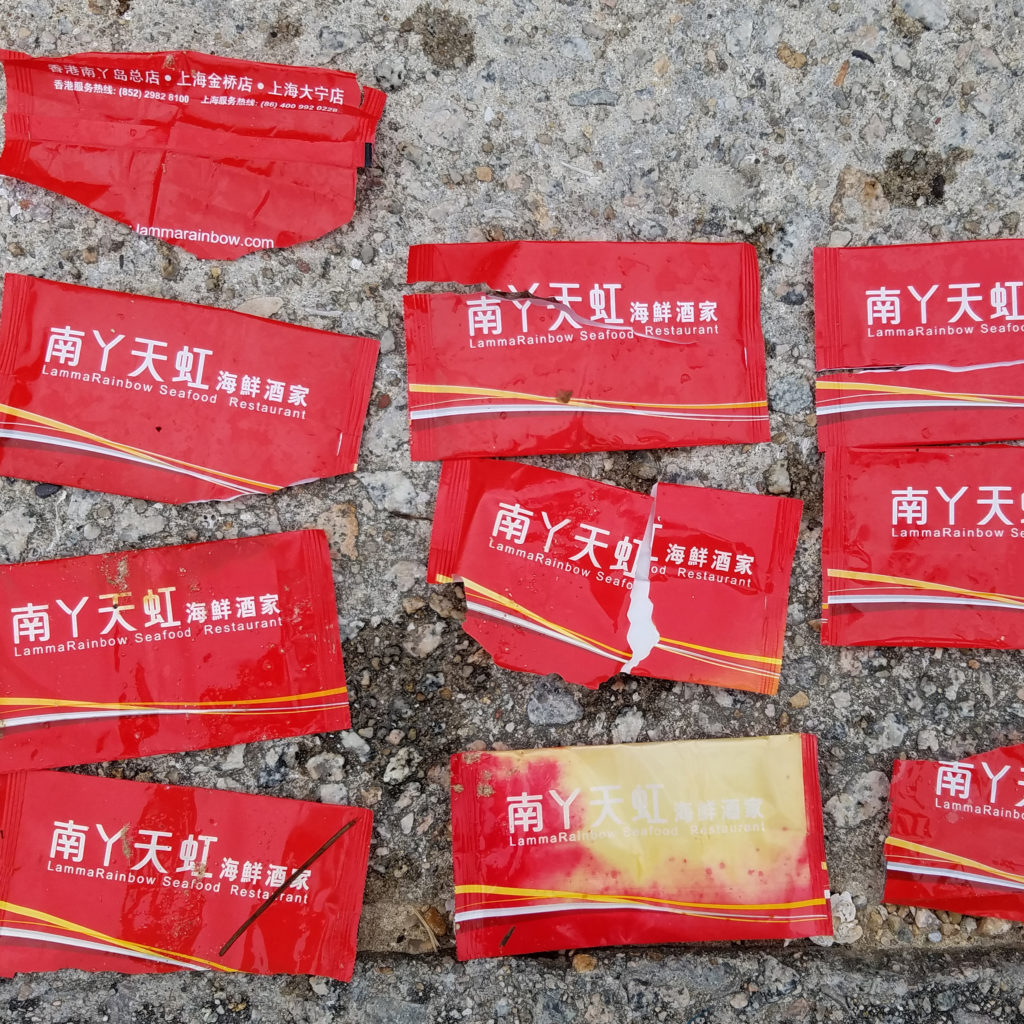
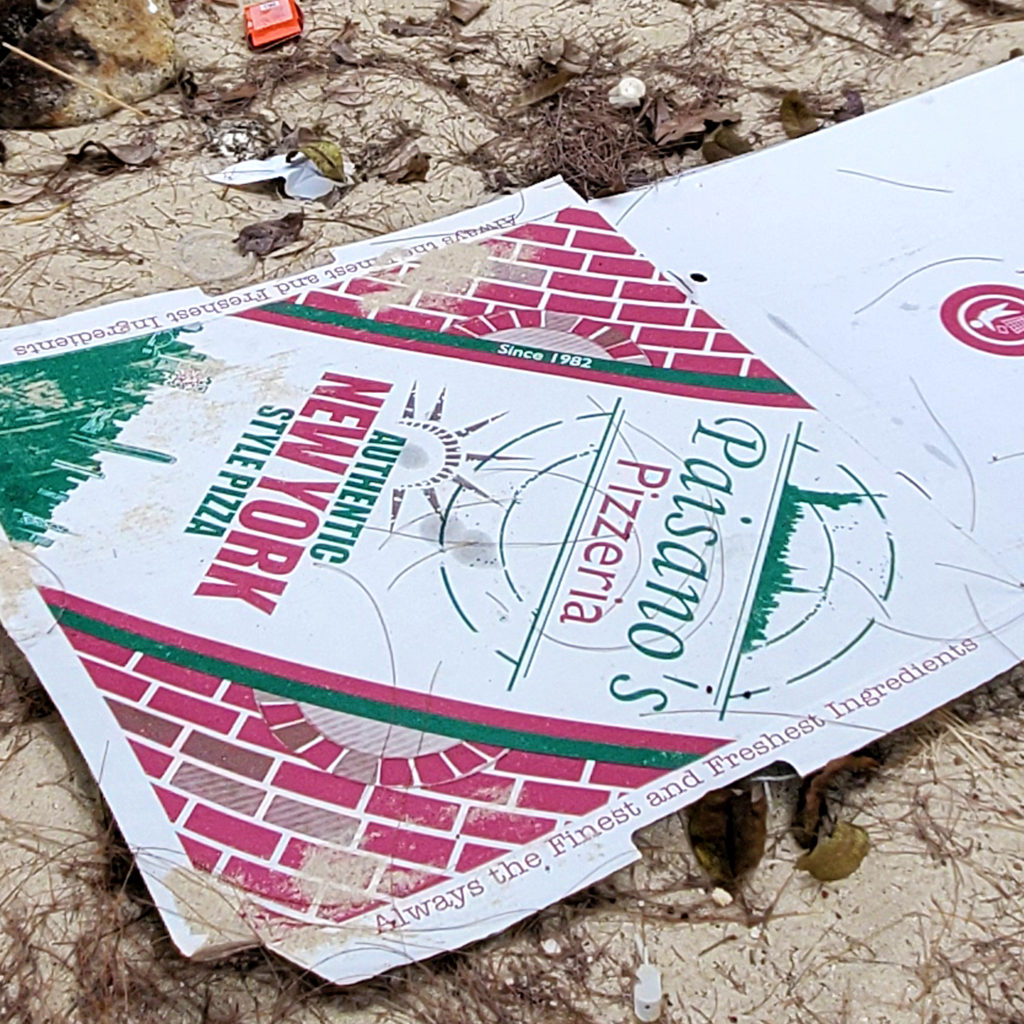
ALWAYS KEEP ASKING YOURSELF QUESTIONS
There is a logical explanation behind how items end up on certain beaches. On one beach we found a 42″ TV, chair and a fridge freezer. How did this arrive on a very remote beach on an uninhabited island? For the freezer we do know that the fishing industry uses old broken down and discarded refrigerators onboard their vessels to store ice in. However over time the salt water rusts the bottom and they no longer are water tight. At this point they are dumped overboard, only to wash up on a remote beach. How did the flat screen TV get there……… that is a mystery!
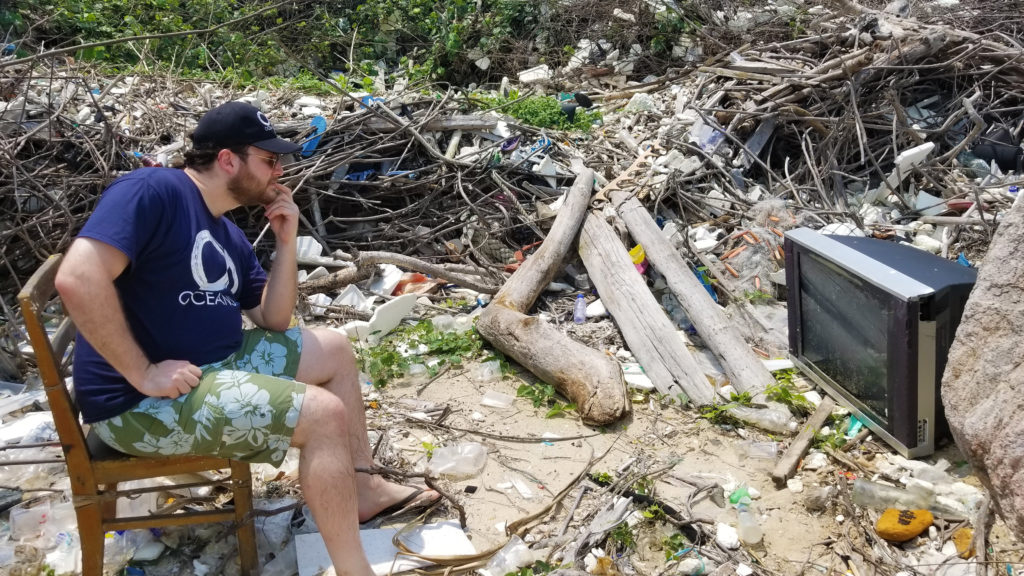
CASE STUDY #1 – PLASTIC CUP INVASION
In the summer of 2016 we saw an incredible amount of household waste as well as a very prominent amount of small clear plastic cups that numbered in the tens of thousands.
We began investigating and observed that most of the plastic cups were crushed and contained soil. Not sand or mud. There are many types of plastic and some types are easily recycled and have a dollar value, then there is the very low grade plastic that is worthless. These flimsy plastic cups similar to the ones found on water stations fall into the worthless category. These we ascertained were likely buried as they were undesirable for recycling.
All of this debris was washing up in the summer months and we know that Hong Kong has two monsoon seasons with opposite directions of current flow. In the summer the currents flow from the west to the east. Directly to the west of Hong Kong is the Pearl River Delta so likely that this waste came from there. Also to note was that China had just endured massive rainfall and flooding inland.
We produced a report and worked with local government agencies in Hong Kong. One of these agencies was the EPD Environmental Protection Department who shared their current flow modelling with us to aid us in our investigations. From the locations where we found the majority of these cups we concluded that they likely originated on the east side of the Pearl River. EPD then liaised with their mainland counterparts. After a couple of weeks we received word from the mainland that they had found a recycling facility who had in fact buried these cups in an embankment. Due to the intense rain and floods this embankment had been washed away, releasing all of these cups. They traveled down river and were then swept into Hong Kong’s beaches.
This is a great example of how Ocean CSI: can help give local government authorities valuable intel so that they can carry out their investigations and address the source. Since this time, we have never seen such a vast amount of these cups washing ashore in Hong Kong. Both Governments should be praised for how they worked together with an NGO to “turn the tap off”.





